Abstract
An evaluation of criteria used in the identification of Vibrio parahaemolyticus showed that cultural responses varied with respect to growth in broth with 10% NaCl, type of hemolysis, reactions in triple sugar-iron-agar, and serological reactions. With few or no exceptions, cultures were positive for cytochrome oxidase, utilized glucose fermentatively, were sensitive to pteridine (0/129) and novobiocin, and failed to grow in Trypticase soy broth (TSB) without NaCl. A procedure employing a direct plating technique, with or without prior enrichment, was designed for the isolation and enumeration of V. parahaemolyticus. The plating medium consisted of 2.0% peptone, 0.2% yeast extract, 1.0% corn starch, 7% NaCl, and 1.5% agar, with the pH adjusted to 8.0. The enrichment broth was TSB with 7% NaCl. Dilutions of food homogenates were either spread directly on the plates or inoculated into enrichment broth. TSB enrichments were incubated at 42 C for 18 hr. A loopful of the TSB tubes then was streaked onto the direct plating medium. Incubation of plates was at 42 C for 24 to 48 hr. Smooth, white to creamy, circular, amylase-positive colonies were then picked as suspect V. parahaemolyticus. Confirmation of gram-negative, fermentative, oxidase-positive, pleomorphic rods sensitive to pteridine 0/129 was made by a fluorescent-antibody technique. With this procedure, a satisfactory quantitative recovery of known V. parahaemolyticus from inoculated seafoods was made possible. V. parahaemolyticus was nto isolated from other salted foods.
Full text
PDF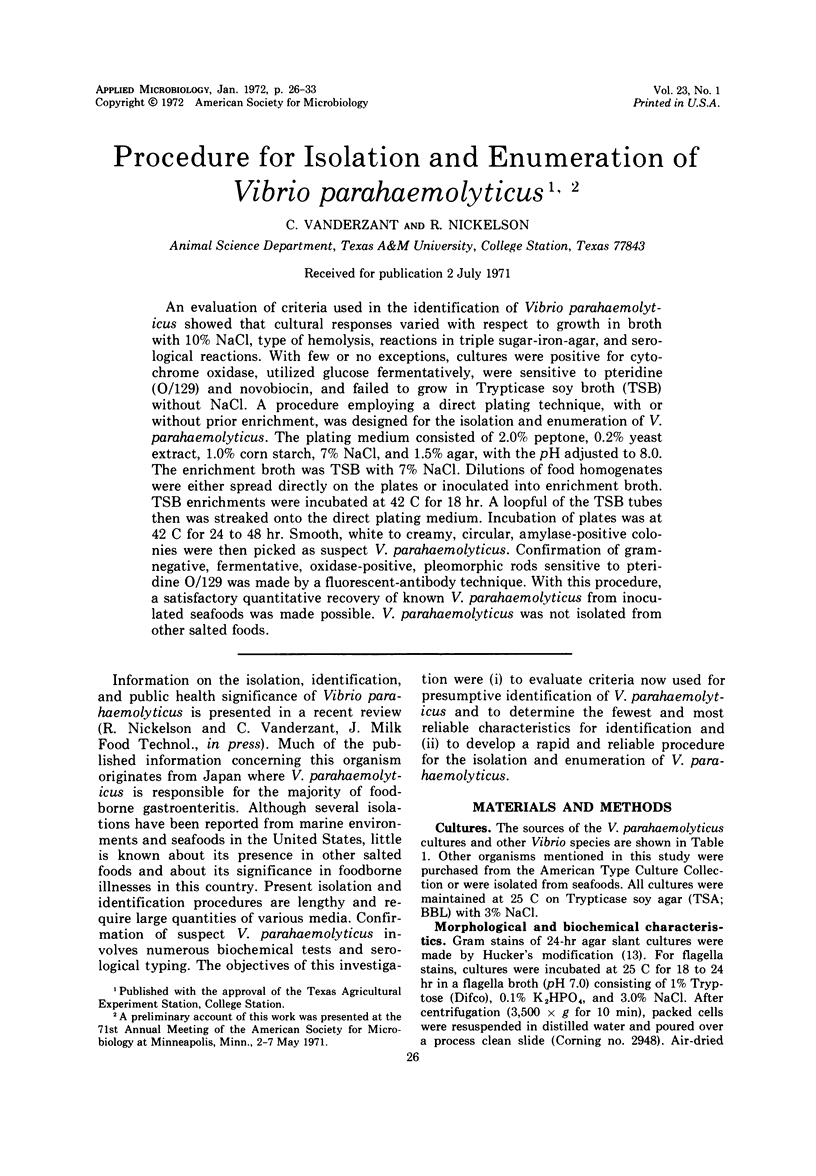

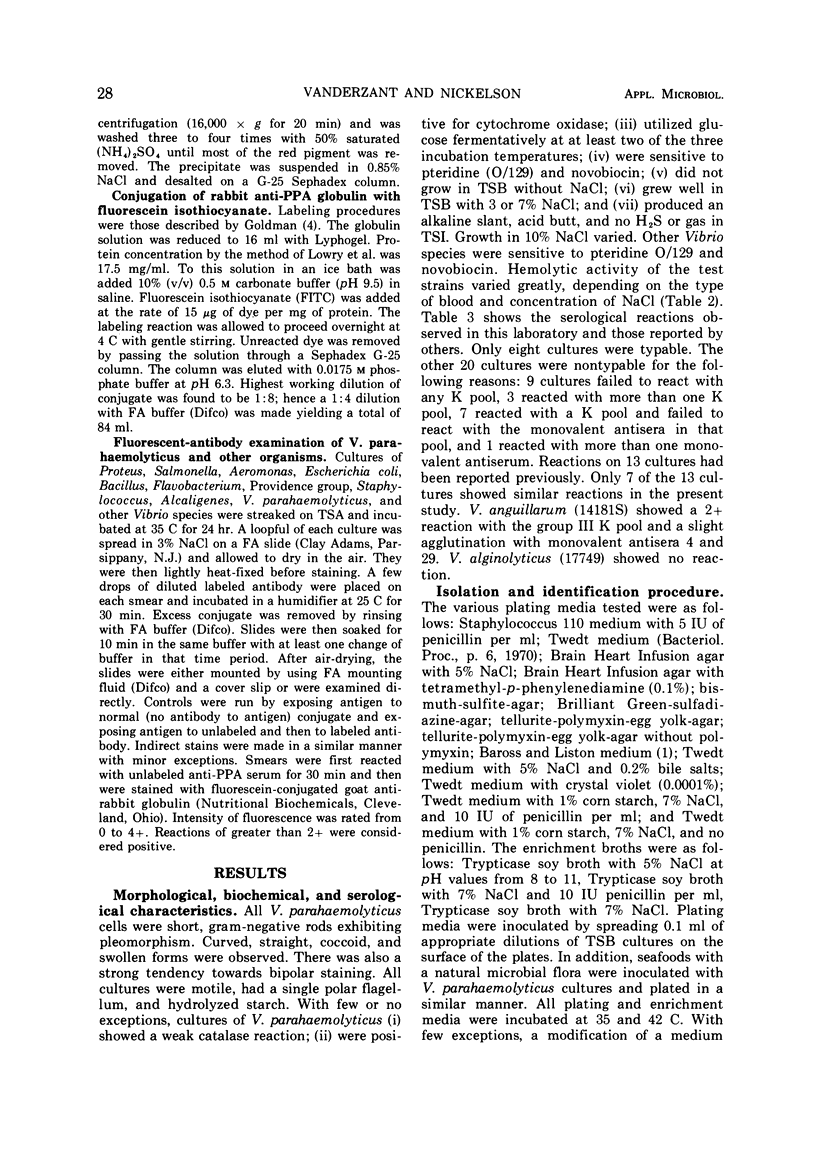
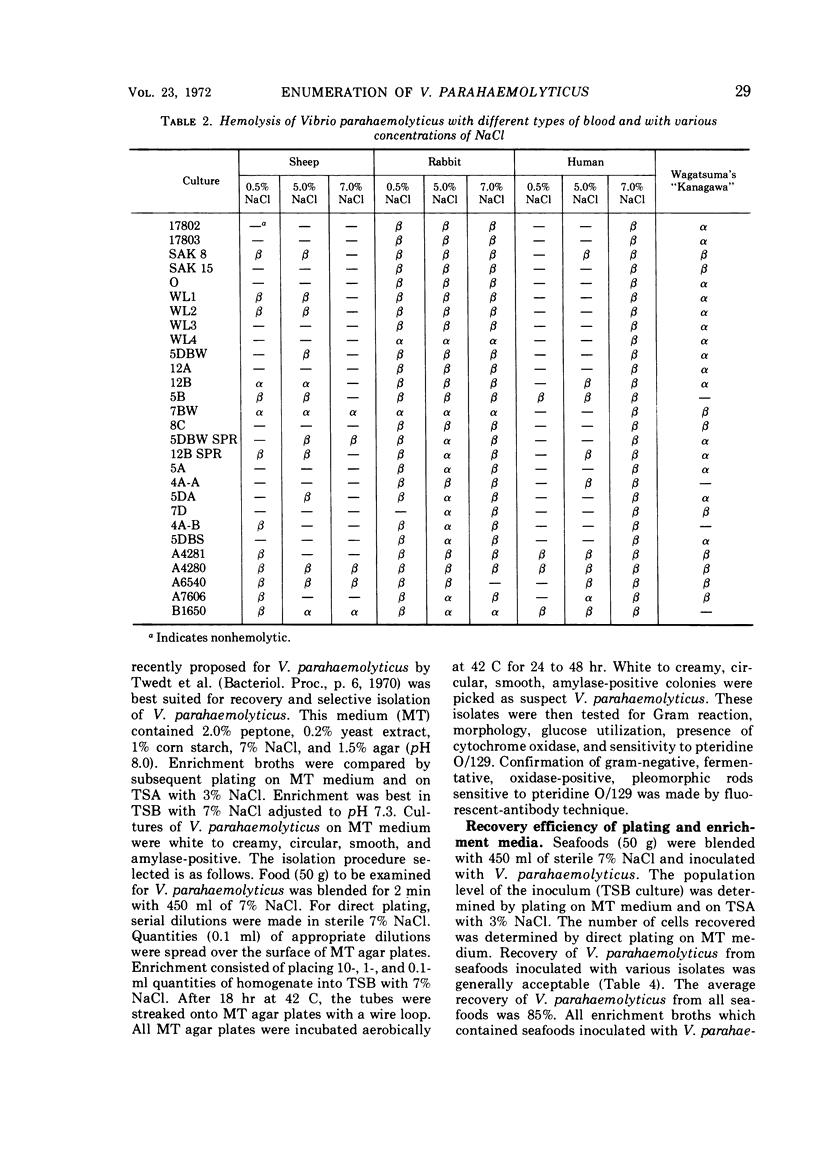
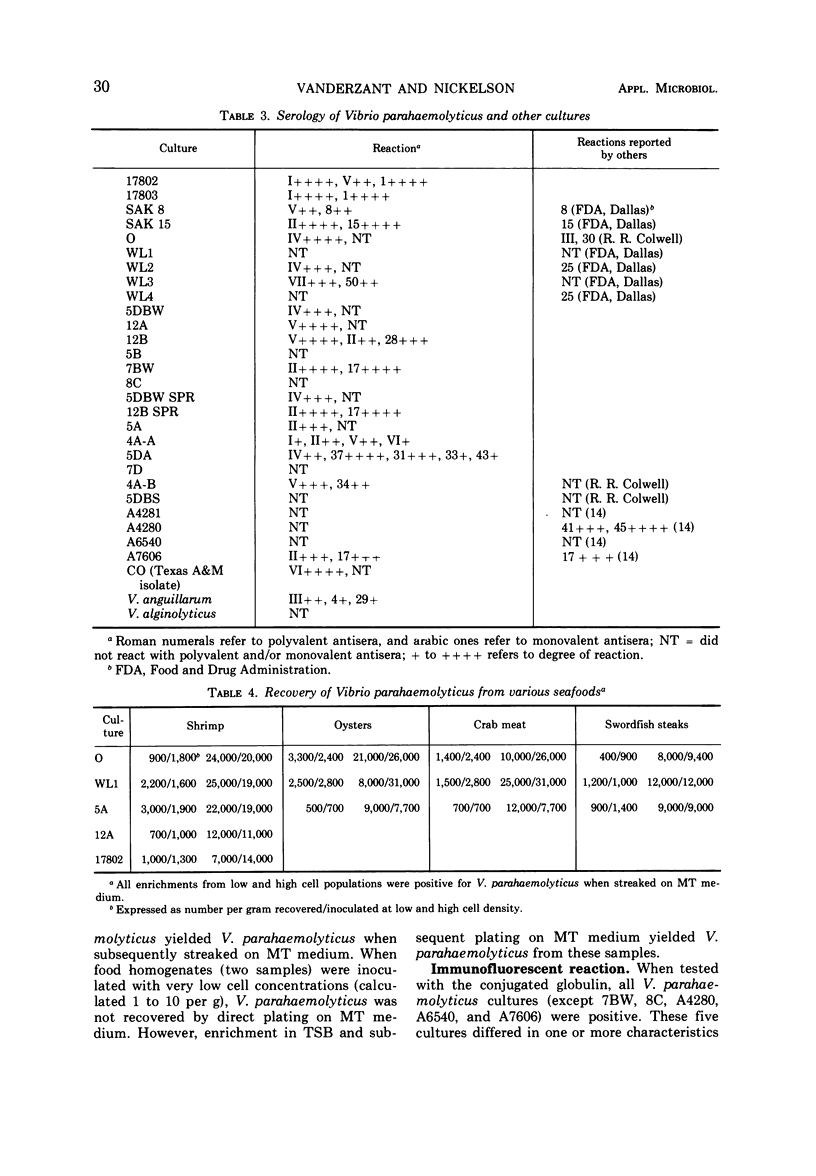
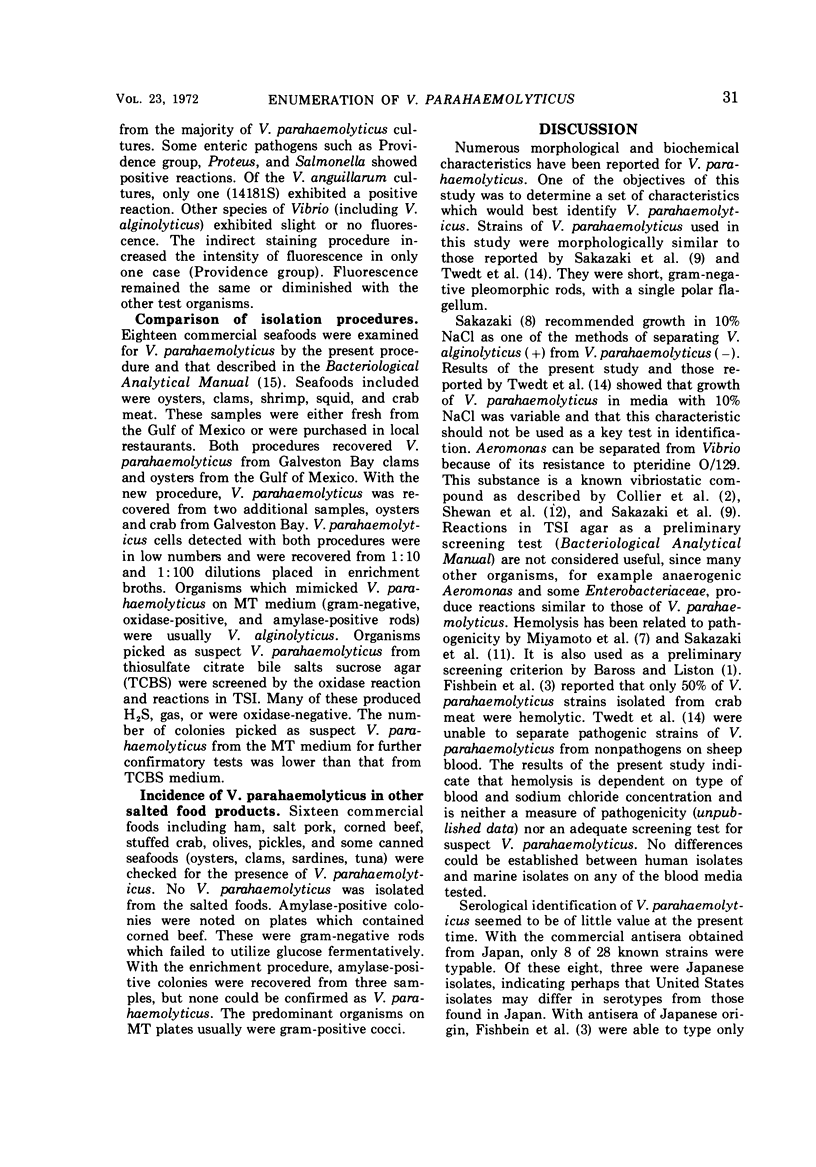
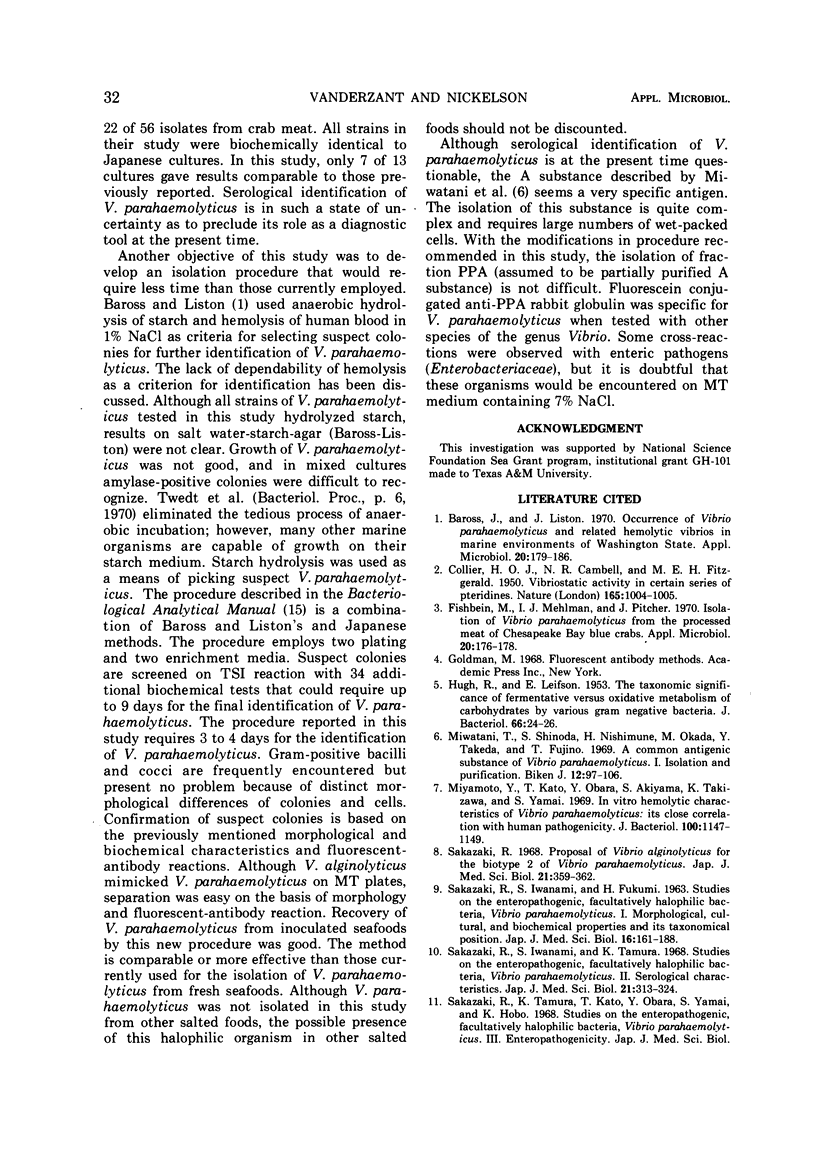
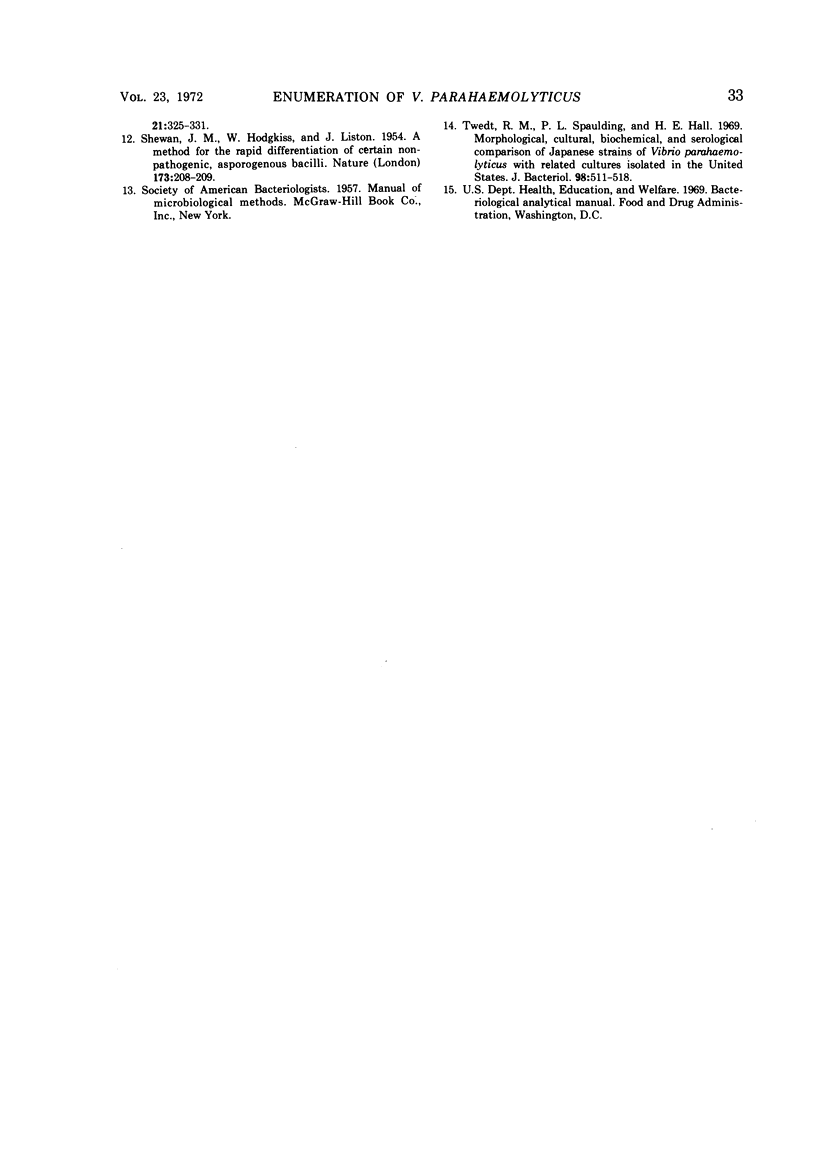
Selected References
These references are in PubMed. This may not be the complete list of references from this article.
- Baross J., Liston J. Occurrence of Vibrio parahaemolyticus and related hemolytic vibrios in marine environments of Washington State. Appl Microbiol. 1970 Aug;20(2):179–186. doi: 10.1128/am.20.2.179-186.1970. [DOI] [PMC free article] [PubMed] [Google Scholar]
- COLLIER H. O. J., CAMPBELL N. R., FITZGERALD M. E. H. Vibriostatic activity in certain series of pteridines. Nature. 1950 Jun 24;165(4208):1004–1005. doi: 10.1038/1651004a0. [DOI] [PubMed] [Google Scholar]
- Fishbein M., Mehlman I. J., Pitcher J. Isolation of Vibrio parahaemolyticus from the processed meat of Chesapeake Bay blue crabs. Appl Microbiol. 1970 Aug;20(2):176–178. doi: 10.1128/am.20.2.176-178.1970. [DOI] [PMC free article] [PubMed] [Google Scholar]
- HUGH R., LEIFSON E. The taxonomic significance of fermentative versus oxidative metabolism of carbohydrates by various gram negative bacteria. J Bacteriol. 1953 Jul;66(1):24–26. doi: 10.1128/jb.66.1.24-26.1953. [DOI] [PMC free article] [PubMed] [Google Scholar]
- Miwtani T., Shinoda S., Nishimune H., Okada M., Takeda Y. A common antigenic substance of Vibrio parahaemolyticus. I. Isolation and purification. Biken J. 1969 Jun;12(2):97–106. [PubMed] [Google Scholar]
- Miyamoto Y., Kato T., Obara Y., Akiyama S., Takizawa K., Yamai S. In vitro hemolytic characteristic of Vibrio parahaemolyticus: its close correlation with human pathogenicity. J Bacteriol. 1969 Nov;100(2):1147–1149. doi: 10.1128/jb.100.2.1147-1149.1969. [DOI] [PMC free article] [PubMed] [Google Scholar]
- SAKAZAKI R., IWANAMI S., FUKUMI H. STUDIES ON THE ENTEROPATHOGENIC, FACULTATIVELY HALOPHILIC BACTERIA, VIBRIO PARAHAEMOLYTICUS. I. MORPHOLOGICAL, CULTURAL AND BIOCHEMICAL PROPERTIES AND ITS TAXONOMICAL POSITION. Jpn J Med Sci Biol. 1963 Aug;16:161–188. doi: 10.7883/yoken1952.16.161. [DOI] [PubMed] [Google Scholar]
- SHEWAN J. M., HODGKISS W. A method for the rapid differentiation of certain nonpathogenic, asporogenous bacilli. Nature. 1954 Jan 30;173(4396):208–209. doi: 10.1038/173208b0. [DOI] [PubMed] [Google Scholar]
- Sakazaki R., Iwanami S., Tamura K. Studies on the enteropathogenic, facultatively halophilic bacterium, Vibrio parahaemolyticus. II. Serological characteristics. Jpn J Med Sci Biol. 1968 Oct;21(5):313–324. doi: 10.7883/yoken1952.21.313. [DOI] [PubMed] [Google Scholar]
- Sakazaki R. Proposal of Vibrio alginolyticus for the biotype 2 of Vibrio parahaemolyticus. Jpn J Med Sci Biol. 1968 Oct;21(5):359–362. doi: 10.7883/yoken1952.21.359. [DOI] [PubMed] [Google Scholar]
- Twedt R. M., Spaulding P. L., Hall H. E. Morphological, cultural, biochemical, and serological comparison of Japanese strains of Vibrio parahemolyticus with related cultures isolated in the United States. J Bacteriol. 1969 May;98(2):511–518. doi: 10.1128/jb.98.2.511-518.1969. [DOI] [PMC free article] [PubMed] [Google Scholar]


